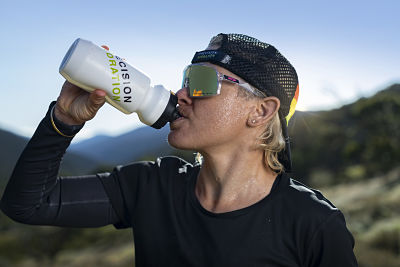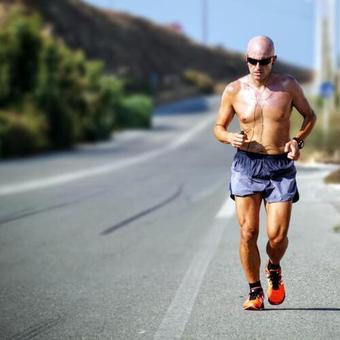In 2019, a group of researchers assessed the effectiveness of hydration and cooling techniques amongst marathon runners and race-walkers at the IAAF World Champs in Doha, where athletes were exposed to temperatures of up to 31°C (88°F) and 75% humidity.
The study's findings were published in the British Journal of Sports Medicine and the results aligned with what we, at Precision Fuel & Hydration, have found to be true when working with athletes who compete in the heat.
With that said, I wanted to pull out some of the most interesting findings and share them here…
Hydration strategies: The key findings
The study assessed 83 marathon runners and race-walkers (competing in the 20km and 50km races) from 28 different countries by using pre-race questionnaires, pre- and post-race weighing, ingestible thermometer pills and thermal cameras. The athletes who were assessed ranged in ability from those who finished on the top step of the podium, right down to last place.
Drinking to thirst vs drinking to a plan
The debate between drinking to thirst or drinking to a plan is ongoing and considered a controversial topic by some. Despite this, we’ve always taken the stance that ‘it depends’ on this one.
There are lots of scenarios where just drinking water to thirst is sensible, such as for basic day-to-day hydration if you're a healthy individual, or for shorter duration and/or lower intensity exercise in cool-to-moderate conditions.
Equally, there are times when drinking to a plan becomes more appropriate. For instance, when you’re competing in long and/or hot events, just like the conditions the athletes found themselves experiencing when competing in Doha.

With that in mind, it was satisfying to see that 93% of the athletes from the study reported having a specific pre-planned strategy.
Having a plan doesn’t mean no flexibility, an athlete still needs to adapt on the day based on how they’re feeling, but having a plan in conditions where your hydration level is going to be most challenged can be the best approach.
In the end it was estimated that the race-walkers planned to drink the most - an average of 1.1 litres of water per hour. The marathon runners planned to drink just 0.7 litres per hour which was most likely due to the fact that it’s harder to drink when running and pushing the pace.
The content of athletes’ fluids
The researchers also strove to understand what athletes planned on drinking.
The data suggests that hydration and nutrition recommendations (i.e. sodium and carb ingestion) are well translated into practice, and that was across all events.
During the race, 83% of athletes planned to use electrolytes, 81% planned to use carbohydrates and 85% planned to use water. Interestingly, those who didn’t intend to drink any water were from African countries which is in line with previous research findings of limited fluid intake.

The dangers of drinking too much
Some more surprising individual data was seen in the 20km race walk where an athlete gained weight during the race; +2.5% of her body mass to be specific. This was most likely due to excessive fluid intake, a strategy not conducive to performance and not recommended due to the risks of hyponatremia.
Slightly worryingly, this individual wasn’t the only one. The researchers concluded that a total of five other athletes overconsumed fluid after it was found that they too gained weight during their event. Five of these six athletes were women.
With lots of talk in the lead-up to Doha about the hot conditions and concerns over dehydration, it’s feasible that some athletes were spooked and overdrank for this reason. This can sometimes happen and is a big reason why education about the dangers of 'overhydration' is still an important message to communicate to all athletes and especially to those competing in the heat.
In long events, a degree of dehydration (weight loss) is actually to be expected and even, dare I say, welcomed. On average, athletes in this study lost 2.2% of their starting body mass, which is more in line with what we would expect.
Cooling tactics: The key findings
As well as hydration practices, the 2019 study investigated the use and prevalence of different cooling strategies.
It was found that 80% of the athletes used pre-cooling techniques to lower their body temperature prior to starting the race. The most popular tools were ice vests, used by 53% of the athletes, and cold towels, used by 45%.
The other, less common methods that some athletes reported they planned to use were neck collars, ice-slurry drinks and cold tubs.
A common strategy prevalent amongst the athletes was the use of planned mid-race cooling, primarily by dumping water on their heads and necks.
Finally, one of the key findings of the paper; athletes who started the race with lower skin temperatures tended to record faster times relative to their pre-race bests and were also less likely to drop out.
As the researchers point out, this latest study doesn't enable us to draw any bulletproof conclusions on exactly which cooling tactics work (participants were only reporting the methods they intended to use!), but it does add more weight to the overall theory that cooling techniques can enhance performance in hot conditions.
